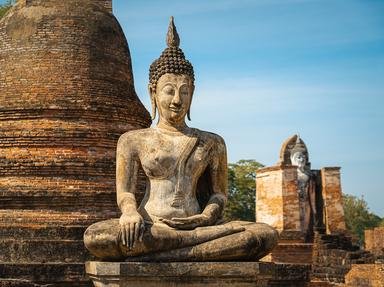Quiz Answer Key and Fun Facts
1. Known as one of the Seven Wonders of the Ancient World, in which of the following ancient cities was the Colossus constructed?
2. Why was the Greek Colossus built?
3. Who is credited with sculpting the Colossus that made the list of the Seven Wonders of the Ancient World?
4. The Greek Colossus was a statue of which of the following gods?
5. How was the building of the Wonder known as the Colossus funded?
6. It is not known exactly where the Greek Colossus stood within the city.
7. The Greek Colossus, one of the Seven Wonders of the Ancient World, was the tallest statue of the ancient world.
8. The Colossus is considered to be the most ephemeral, or shorted-lived, of the Seven Wonders of the Ancient World. What happened to it?
9. After the Greek Colossus was destroyed, the people did consider rebuilding it. Why did they decide not to do so?
10. No one knows exactly what features were given to the Greek Colossus. Nevertheless, it is said to have inspired what modern statue?
Source: Author
ponycargirl
This quiz was reviewed by FunTrivia editor
stedman before going online.
Any errors found in FunTrivia content are routinely corrected through our feedback system.
